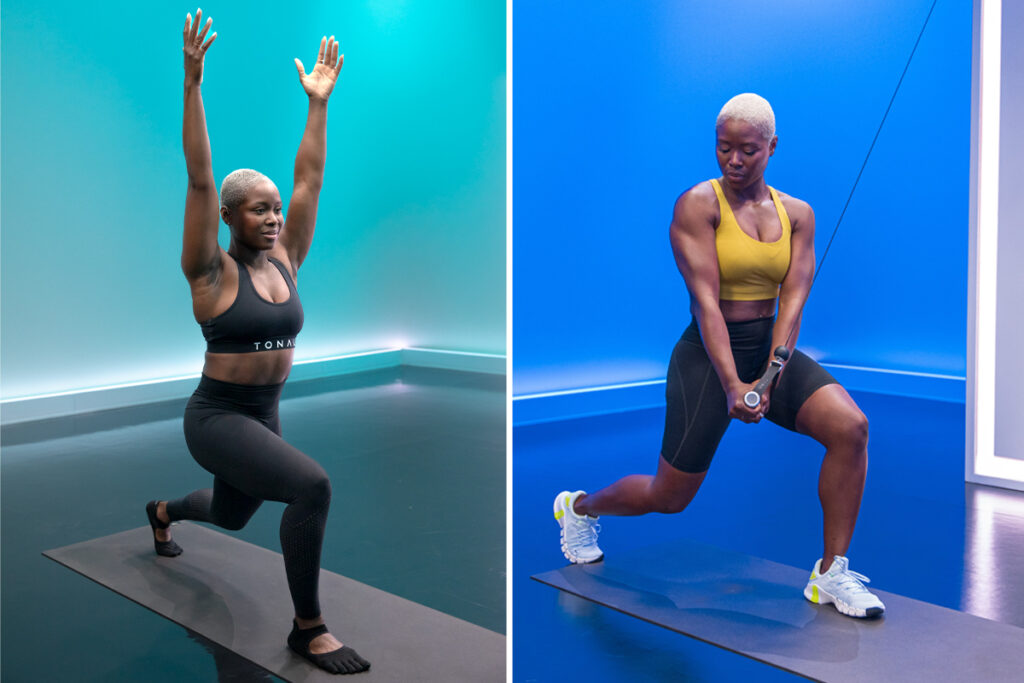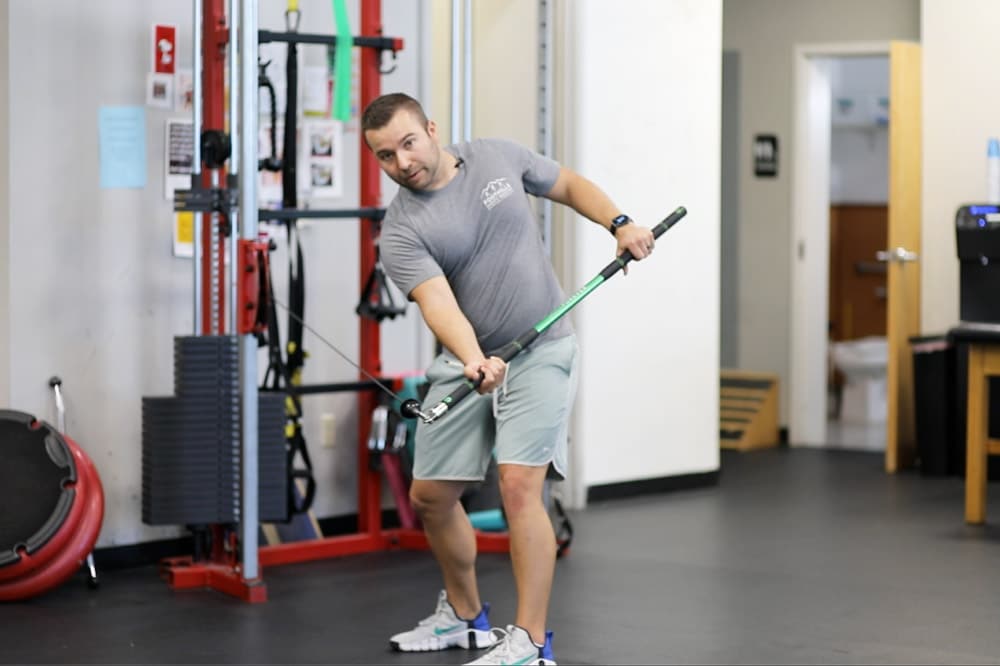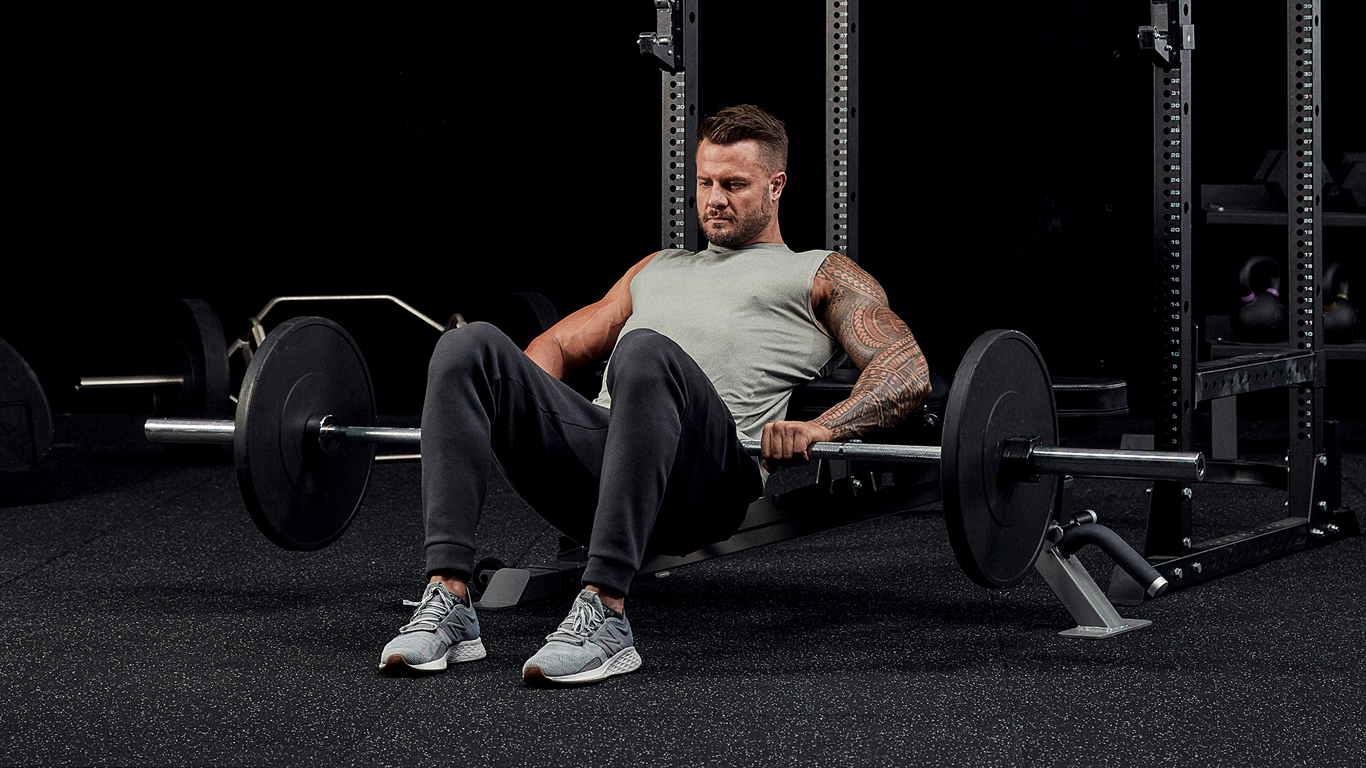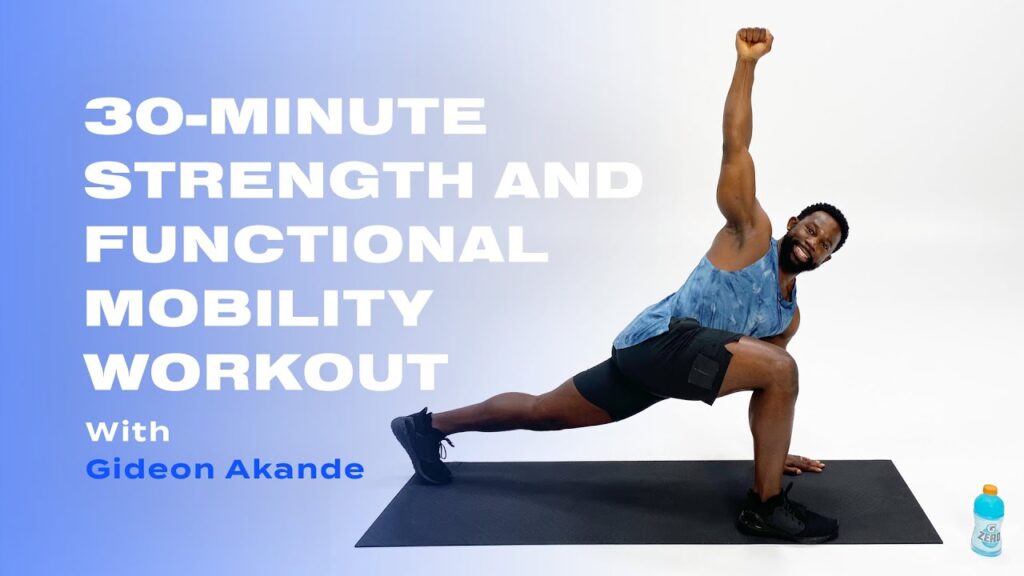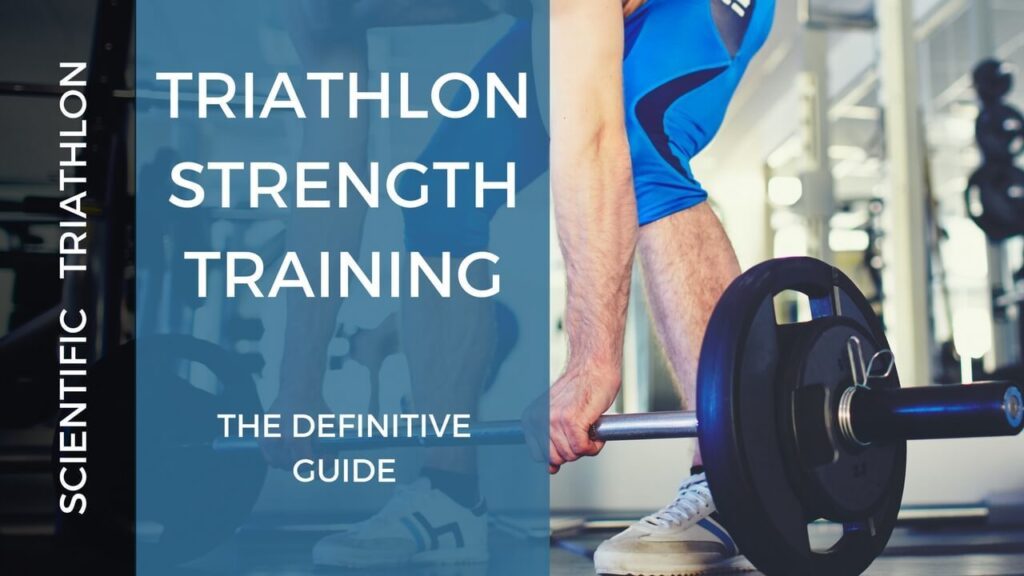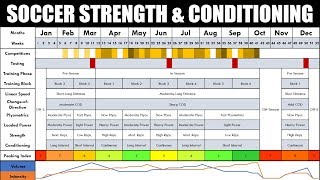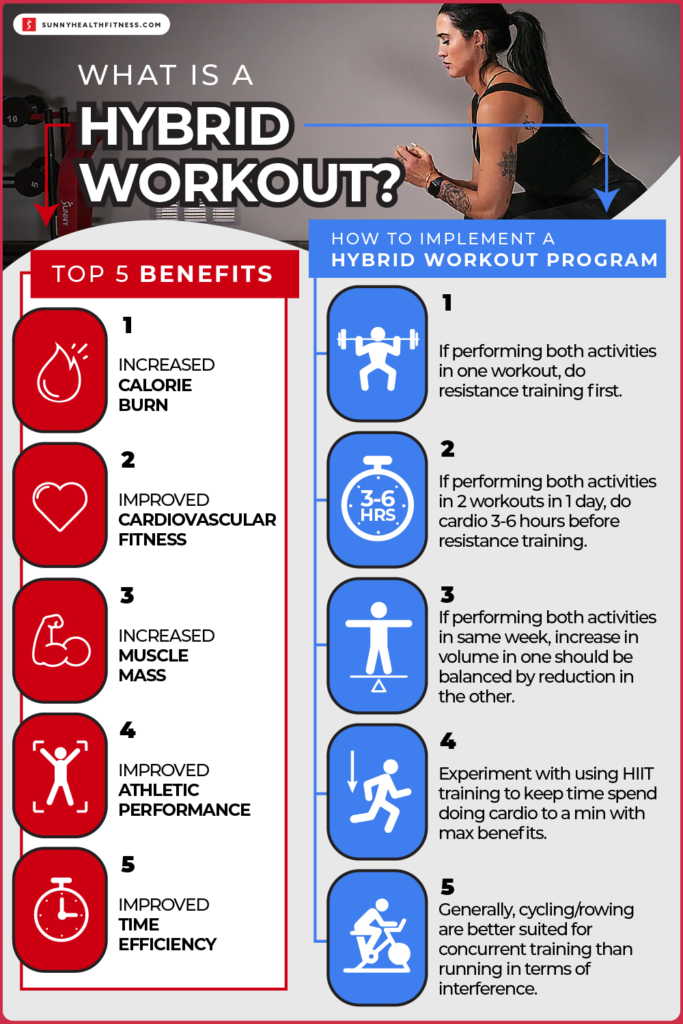Traditional strength training focuses on building muscle mass and strength through isolated exercises. Functional strength training aims to improve overall daily movement and athletic performance.
Strength training is a crucial aspect of any fitness regimen. Traditional strength training typically involves exercises targeting specific muscle groups, like bicep curls or bench presses. These workouts are great for muscle hypertrophy and increasing raw strength. Functional strength training, on the other hand, integrates multiple muscle groups and mimics real-life activities.
Exercises like squats, lunges, and kettlebell swings fall into this category. The goal is to enhance your ability to perform everyday tasks or improve athletic performance. Both training styles have their merits and can be tailored to individual fitness goals.
Introduction To Strength Training
Strength training builds muscle and increases power. It involves lifting weights or using resistance bands. Traditional strength training focuses on specific muscles. Functional strength training helps with everyday movements. Both methods improve strength and fitness. Each has unique benefits.
Strength training has gained much popularity. Many people now include it in their workouts. Traditional strength training has been around for decades. It remains popular in gyms and sports. Functional training has become trendy in recent years. It mimics daily activities and movements. Many fitness enthusiasts find it useful. Both types of training continue to evolve. New techniques and equipment are always being developed.
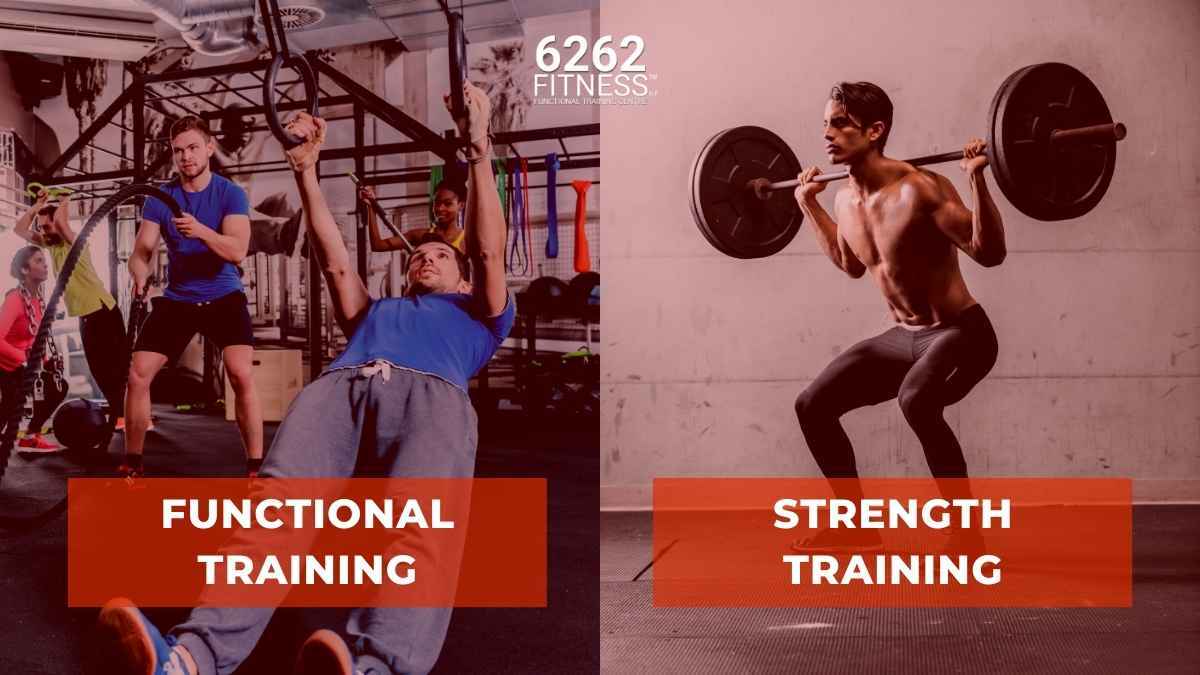
Credit: 6262fitness.com
Traditional Strength Training
Traditional strength training focuses on building muscle mass. Exercises often use weights and machines. Workouts usually target specific muscle groups. This type of training improves muscle size and strength. It often includes sets and repetitions. Rest periods between sets are common. Training is done in a controlled environment like a gym. Goals often include increased muscle definition.
Common exercises include bench press, squats, and deadlifts. Bicep curls and leg presses are also popular. These exercises use free weights and machines. Isolation exercises focus on one muscle group at a time. Compound exercises use multiple muscle groups. Lifting heavy weights is a key element. Proper form is crucial to avoid injury.
Functional Strength Training
Functional strength training focuses on movements that mimic daily activities. It aims to improve balance, coordination, and flexibility. Exercises target multiple muscle groups. This type of training enhances overall body strength. Incorporating real-life movements is key. The goal is to make everyday tasks easier. This approach helps to prevent injuries. It also enhances athletic performance.
Functional movements include squats, lunges, and deadlifts. Push-ups, pull-ups, and planks are also common. These exercises engage the core muscles. They involve multiple joints and muscle groups. Movements are often dynamic. They require balance and coordination. Kettlebell swings and medicine ball throws are also popular. These exercises build explosive power. Functional training often includes bodyweight exercises. These can be done anywhere, anytime. Consistency is key to seeing benefits.

Credit: www.youtube.com
Comparative Analysis
Traditional strength training focuses on isolating specific muscles. This method helps in building muscle size. Functional strength training aims to improve overall body movement. It works on multiple muscles at the same time. Both methods have their benefits. Traditional training can make muscles bigger and stronger. Functional training improves everyday movements. Combining both can offer balanced results.
Traditional strength training is great for bodybuilders. It helps in achieving specific muscle goals. Functional strength training is more useful for daily activities. It improves balance and coordination. Athletes often use functional training. It helps in enhancing performance. Everyone can benefit from functional training. It makes everyday tasks easier.
Health And Safety Considerations
Proper form is very important in both traditional and functional training. Warm-ups and cool-downs help reduce the risk of injury. Functional training often uses more natural movements. These movements mimic daily activities. Traditional training focuses on isolated muscle groups. This can lead to muscle imbalances if not done correctly. Trainers can help ensure exercises are done safely. Listening to your body is crucial to prevent injuries. Never push through pain during workouts.
Consistent training helps maintain strength and flexibility. Functional training improves balance and coordination. This is beneficial for everyday activities. Traditional training builds muscle mass and strength. Both types of training have long-term health benefits. Mixing both can provide a balanced fitness routine. This approach supports overall wellness. Regular check-ups with a healthcare provider are also important. They help monitor progress and health.
Adaptability And Accessibility
Traditional strength training often needs heavy machines and free weights. Gyms usually provide these tools. Functional strength training uses minimal equipment. It often involves items like resistance bands or kettlebells. Sometimes, only body weight is necessary. This makes it easier to start at home.
Traditional strength training usually happens in a gym. These places have all the needed machines and weights. Functional strength training can occur anywhere. This includes home, park, or gym. It’s very flexible and easy to fit into daily life.
Athlete And Professional Insights
Many experts believe functional strength training is more effective. It mimics real-life movements. Traditional strength training focuses on isolated muscles. This can build bulk but not always functional strength. Functional exercises often use body weight and free weights. Traditional methods rely on machines and specific muscle groups. Athletes prefer functional training. It helps in performance and injury prevention. Professionals in sports medicine also support this view.
A famous athlete switched from traditional to functional training. His performance improved significantly. Another case involved a professional dancer. She used functional training to prevent injuries. Her flexibility and strength increased. A third case study showed an elderly person gaining better mobility. He switched to functional exercises and saw quick results. These real-life examples support the benefits of functional strength training.

Credit: www.differencebetween.net
Creating A Personalized Regimen
Individual needs vary greatly. Some people need to build muscle mass. Others aim to improve everyday movements. Knowing your goals is essential. Evaluate your current fitness level. Understand any physical limitations you might have. Consulting with a fitness professional can help. They offer valuable insights for your plan. A balanced approach is often the best. You might need both traditional and functional training.
Using both methods can be beneficial. Traditional strength training focuses on specific muscles. It often uses machines or free weights. Functional training targets movement patterns. It often involves body weight exercises. Combining these can maximize results. For example, use weights for muscle strength. Then, add body movements for overall function. Mix up your routines. This keeps workouts exciting and effective.
Frequently Asked Questions
What Is The Difference Between Traditional Strength Training And Functional Strength Training?
Traditional strength training focuses on isolated muscle exercises using machines or weights. Functional strength training emphasizes movements that mimic daily activities, improving overall body function.
What Is The Difference Between Functional And Traditional Strength Training On Apple Watch?
Functional strength training on Apple Watch targets multiple muscle groups using dynamic movements. Traditional strength training focuses on isolating specific muscles.
Does Traditional Or Functional Strength Training Burn More Calories?
Functional strength training burns more calories than traditional strength training. It engages multiple muscle groups, increasing overall energy expenditure.
Why Functional Training Is Better?
Functional training improves everyday movements, enhances muscle coordination, and boosts strength. It reduces injury risk and increases flexibility.
What Is Traditional Strength Training?
Traditional strength training focuses on lifting weights to build muscle mass and improve overall strength.
What Is Functional Strength Training?
Functional strength training improves everyday movements by using exercises that mimic real-life activities.
Which Is Better For Daily Activities?
Functional strength training is better for daily activities as it enhances movement patterns used in everyday life.
Can I Combine Both Training Methods?
Yes, combining both traditional and functional strength training can offer comprehensive fitness benefits.
Is Traditional Strength Training Good For Beginners?
Yes, traditional strength training is suitable for beginners and can be adapted to various fitness levels.
Does Functional Training Improve Athletic Performance?
Yes, functional training enhances agility, balance, and coordination, which are crucial for athletic performance.
Conclusion
Choosing between traditional and functional strength training depends on your fitness goals. Both methods offer unique benefits. Traditional training focuses on muscle growth. Functional training improves overall movement and daily activities. Mix both for a balanced routine. Listen to your body and enjoy your fitness journey.

